Medical Disclaimer: This article is for informational purposes only and does not substitute professional veterinary advice. Always consult your veterinarian regarding your pet’s health.
Table of Contents
Introduction
If you’ve ever thought leptospirosis was just a “rural dog” disease, 2025 is here to prove otherwise. As a practicing small-animal veterinarian in Canada, I’ve treated everything from young urban pups with kidney damage to senior lapdogs battling sudden fevers, all from leptospirosis. And in almost every case, they were either unvaccinated or missing protection against the full range of serovars.
This article breaks down 10 essential reasons why the leptospirosis vaccine in dogs is a life-saving, non-negotiable preventive in today’s veterinary landscape. With new outbreak data, cutting-edge vaccine research, and updated clinical guidelines, we’re rewriting what “high risk” means and why every dog, everywhere, deserves robust protection.
Key Takeaways
- Leptospirosis is life-threatening and zoonotic, meaning it can spread from dogs to humans.
- The leptospirosis vaccine in dogs is strongly recommended annually for all dogs, not just high-risk ones.
- Modern quadrivalent (L4) vaccines cover more dangerous strains than outdated bivalent versions.
- Outbreaks have occurred even in urban, low-risk regions like Wyoming (2023), prompting emergency vaccine campaigns.
- New ACVIM guidelines now recognize older dogs, small breeds, and urban pets as vulnerable.
- Uptake remains low in many areas; public awareness and vet-client conversations are key.
- A One Health approach means protecting your dog also protects your family.
- The vaccine is affordable, widely available, and often bundled into your dog’s annual check-up.
- Research shows the quadrivalent vaccine prevents shedding, reducing environmental transmission.
- In 2025, leptospirosis isn’t just a rural risk; it’s a real, preventable threat in every Canadian community.
What’s New in Leptospirosis Vaccine Guidelines?
Also visit: https://doglifeexpert.com/rabies-in-dogs-2025-your-must-read/
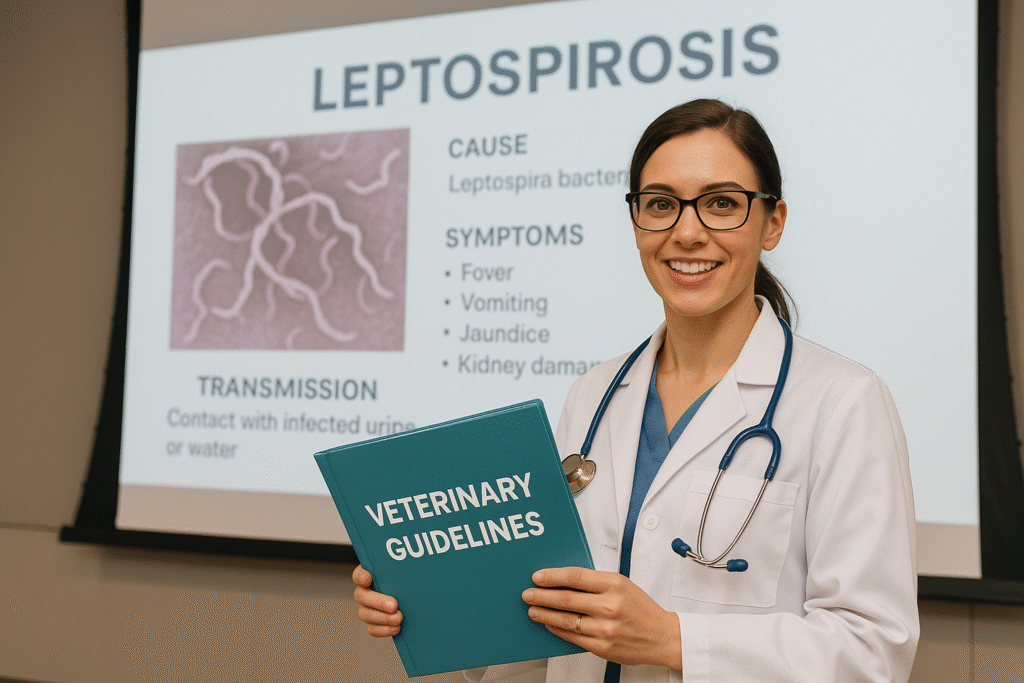
Leptospirosis has long been misunderstood as a disease of “outdoor dogs” or “farm dogs.” But updated research and expert consensus are shifting that narrative. The leptospirosis vaccine in dogs has evolved from optional to essential, driven by emerging data, global outbreaks, and updated medical guidance.
ACVIM 2023 Consensus at a Glance
In 2023, the American College of Veterinary Internal Medicine (ACVIM) published a major update on canine leptospirosis. The report emphasized a critical point: leptospirosis is geographically widespread, and any dog, regardless of size, age, or environment, can be at risk (eScholarship).
This latest consensus reflects:
- Improved diagnostic testing, enabling earlier detection
- Broader recognition of underdiagnosed strains
- A better understanding of how urban wildlife and standing water create year-round exposure risks
Critically, it also stated that even toy breeds and indoor dogs, once considered low risk, should receive the annual leptospirosis vaccine in dogs protocols using quadrivalent protection.
Urban and Small-Breed Dogs Now Considered High-Risk
In clinical practice, I’ve personally seen an uptick in cases from dogs in downtown Ottawa, most with minimal outdoor exposure. Many were small breeds or seniors, two groups historically exempted from vaccination against leptospirosis.
The new guidelines correct that oversight. Smaller dogs may be at higher biological risk due to their compact size and unique immune response patterns. The ACVIM now urges veterinarians to recommend the leptospirosis vaccine in dogs universally, especially in areas with flooding, urban wildlife, or dense dog populations.
Even if your dog only walks city sidewalks or plays in fenced yards, the leptospirosis vaccine in dogs should be a core part of their annual preventive care.
Quadrivalent vs. Bivalent Vaccines: What’s the Difference?
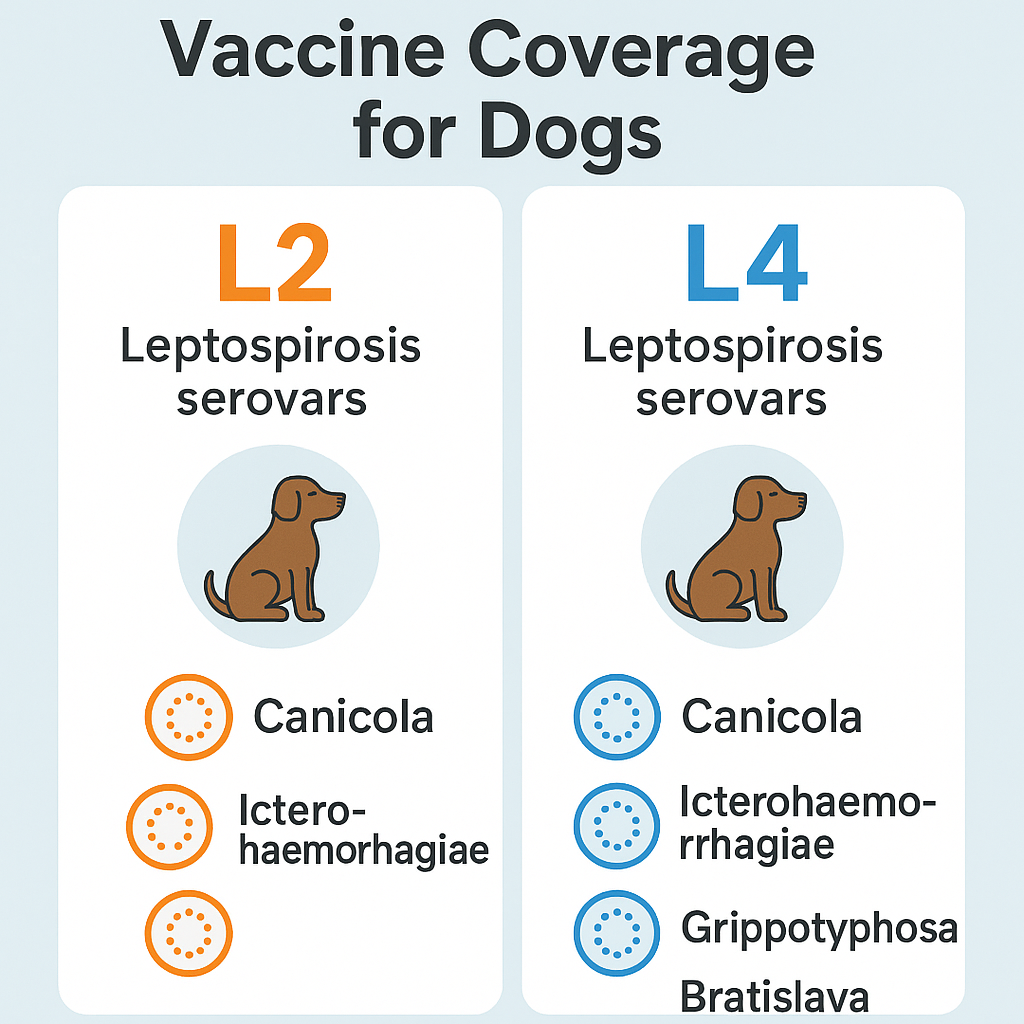
Not all leptospirosis vaccines offer the same level of protection. The core difference lies in how many serovars (strains) of Leptospira bacteria each vaccine targets, and this has direct consequences for your dog’s safety.
Serovars Covered by Modern L4 Formulations
Traditional bivalent vaccines protect against only Leptospira canicola and L. icterohaemorrhagiae. While these strains are serious, they represent just a slice of the risk profile dogs face in 2025.
The newer quadrivalent vaccine,s commonly referred to as L4, also protects against L. grippotyphosa and L. australis. These strains are increasingly common in North America and have been implicated in multiple outbreaks and severe clinical cases (SpringerLink).
From a clinical standpoint, I no longer recommend any vaccine protocol that skips these serovars. The leptospirosis vaccine in dogs should be L4 by default.
Why Bivalent Coverage May Be Outdated
Recent experimental research on a licensed L4 vaccine (EURICAN® L4) revealed compelling results. It prevented bacterial shedding, kidney damage, and clinical disease following challenge with L. australis, a strain not included in older vaccines (MDPI).
This means that L4 vaccines:
- Offer broader immune protection
- Help reduce environmental contamination from infected dogs
- Lower the zoonotic risk to humans
When discussing vaccine options, make sure your veterinarian is using a quadrivalent leptospirosis vaccine in dogs, and if not, ask why.
Real-World Vaccine Uptake: Are Dogs Getting Protected?
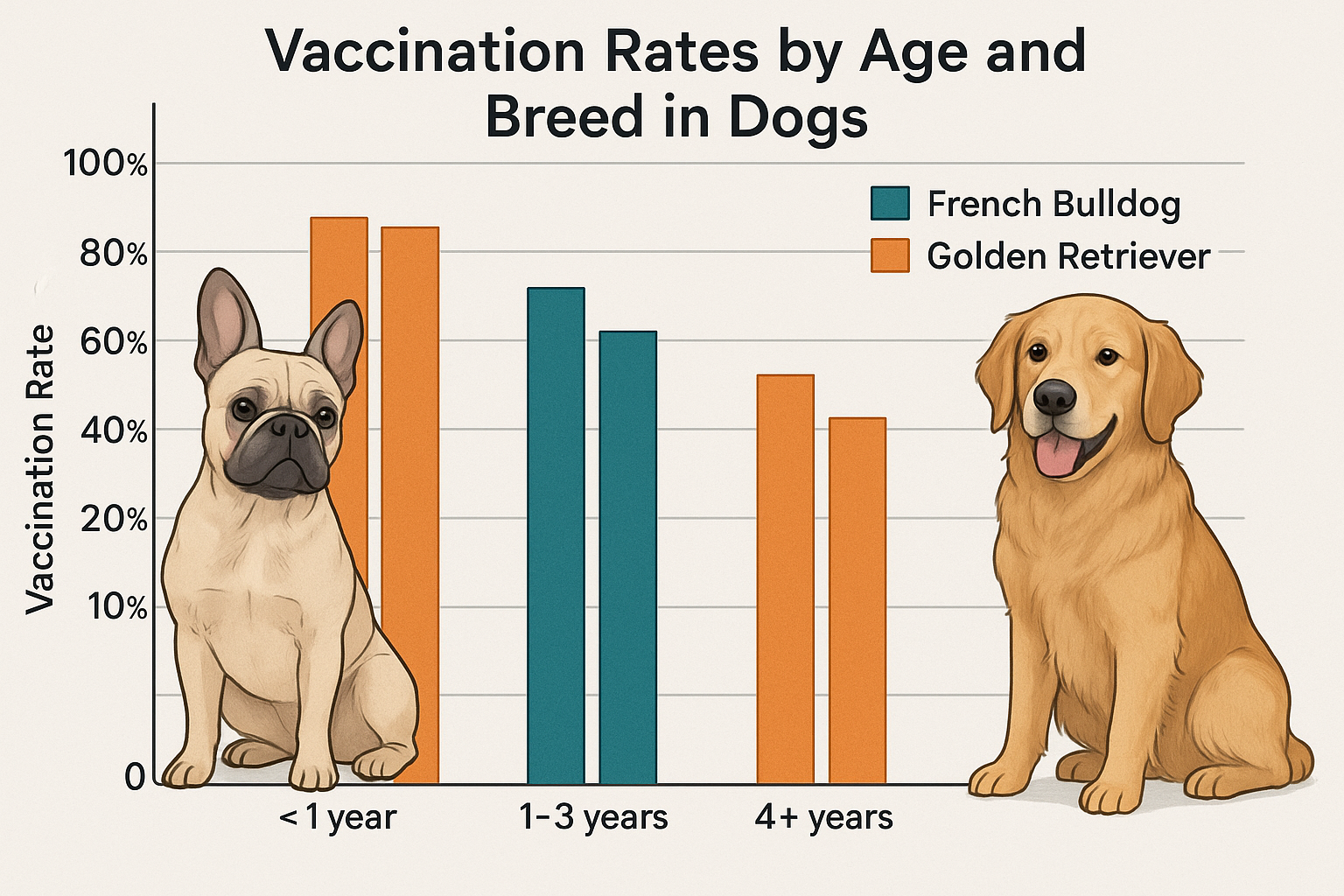
Despite the growing scientific consensus and improved vaccine technology, actual vaccine uptake remains inconsistent. In real-world settings, many dogs remain unprotected, either due to owner hesitancy, outdated protocols, or regional misinformation about risk.
UK Trends in Leptospirosis Vaccine Uptake
A 2022 study analyzing over 900,000 dogs in UK primary care found that only about 49% of dogs received any leptospirosis vaccine in a given year. Of those:
- 27% received a quadrivalent (L4) vaccine
- 11% got only a bivalent (L2) vaccine (SpringerLink)
These numbers suggest a large protection gap, especially among older dogs and those living in lower-income areas.
In my Canadian practice, I’ve seen similar trends: small breed owners often opt out due to fears of vaccine reactions. Unfortunately, this leaves many dogs vulnerable to leptospirosis strains not covered by L2 vaccines.
Demographic & Breed Patterns in Compliance
The same study found that dogs were more likely to be vaccinated if they were:
- Younger
- Neutered
- Insured
- Belonging to breeds like the Golden Retriever or Border Terrier
Meanwhile, lower vaccine uptake was linked to:
- Dogs over 8 years old
- Breeds like French Bulldogs and Pugs
- Dogs in economically deprived regions
As clinicians, we must help owners understand that age and breed don’t grant immunity. The leptospirosis vaccine in dogs is a frontline defense, especially for populations at risk of being overlooked.
Outbreaks on the Rise: One Health Lessons from Wyoming
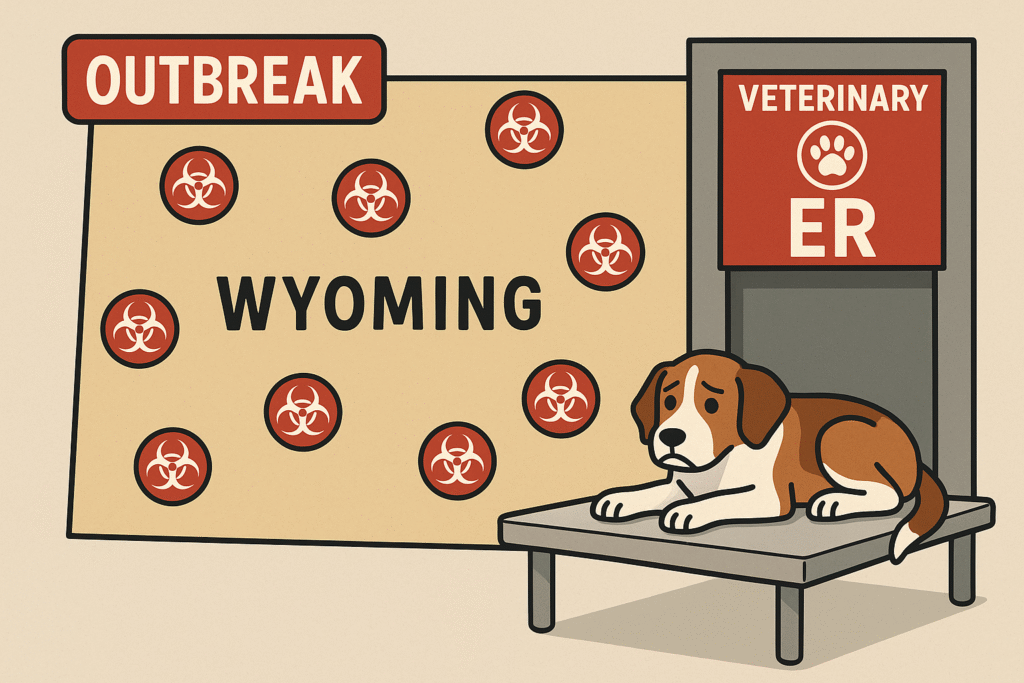
In 2023, a sudden outbreak of canine leptospirosis in Teton County, Wyoming, took both local veterinarians and public health officials by surprise. What made it remarkable wasn’t just the high number of dog cases, but the first human leptospirosis case in the area since 1983 (CDC MMWR).
Timeline of the 2023 Human–Canine Cluster
- Early June: Multiple dogs presented with acute renal signs.
- Mid-June: Leptospira confirmed in both urine and blood samples.
- July: A dog owner was hospitalized with fever, liver involvement, and confirmed leptospirosis.
- August: A county-wide campaign promoted urgent vaccination.
This outbreak, in a previously low-risk region, changed the local veterinary community’s perception of the disease.
Before the outbreak, only 8% of veterinarians in the county regularly recommended the leptospirosis vaccine in dogs. After the public health alert, that number jumped to 80%, and vaccine uptake among owners rose from 33% to over 51%.
Vaccine Hesitancy and Public Health Turnaround
The Wyoming outbreak emphasized that geography is no longer a reliable predictor of leptospirosis risk. Climate shifts, increasing wildlife interaction, and human encroachment on natural spaces have made this bacterium mobile and unpredictable.
It also underscored the One Health approach, the idea that human, animal, and environmental health are deeply interconnected. By ensuring your pet receives the leptospirosis vaccine in dogs, you’re not just protecting them, you’re also blocking a potential zoonotic bridge to your family.
The case makes it clear: if a low-risk community like Teton County can see a human case, so can urban centres like Toronto, Ottawa, or Vancouver. The leptospirosis vaccine in dogs isn’t optional; it’s a public health imperative.
What Canadian Dog Owners Should Know in 2025

In Canada, our seasonal shifts, abundant wildlife, and growing urban sprawl have made leptospirosis a year-round concern, even for dogs that never leave the suburbs. Understanding how this applies locally can empower pet owners to make informed, protective choices.
Annual L4 Shots Are Now the Standard
Veterinarians across the country now recommend the annual quadrivalent (L4) leptospirosis vaccine in dogs as part of core preventative care. This includes:
- Puppies as young as 8 weeks, with boosters
- Small breed and senior dogs, despite past hesitation
- Dogs with mostly indoor lifestyles or urban exposure
With environmental reservoirs such as raccoons, rats, skunks, and contaminated water common in most cities, every backyard or splash pad can become a risk zone.
Wet Seasons, Wildlife, and City Parks: Hidden Risks
Anecdotally, I’ve seen spikes in suspected leptospirosis cases after heavy rainfall, especially in dogs that visited popular urban parks or trails. Standing water is a perfect carrier, and wildlife often sheds the bacteria through urine.
Even a sniff or paw dip in a puddle contaminated with Leptospira can result in:
- Acute kidney or liver failure
- Painful fever and lethargy
- Risk to human caretakers, particularly kids or immunocompromised adults
Your dog doesn’t have to swim in a lake or run on a farm to be exposed. That’s why we urge a consistent annual leptospirosis vaccine in dogs, regardless of geography or breed.
Tips for Talking to Your Vet About Lepto
If you’re unsure whether your dog is protected:
- Ask for your dog’s vaccine history and confirm the product used is quadrivalent.
- Discuss any breed-specific concerns you may have. Most modern vaccines are well-tolerated, even in small dogs.
- Bring up your local environment (wildlife sightings, water exposure, travel plans).
- Ensure the vaccine is boosted annually, not every few years.
Most importantly, don’t assume your vet will bring it up or advocate for your dog’s safety. And if your vet doesn’t routinely offer the leptospirosis vaccine in dogs, it may be time for a second opinion.
Typical Canadian Costs for Leptospirosis Vaccination
The good news? The leptospirosis vaccine in dogs is not only effective, it’s also relatively affordable. In most Canadian cities, it’s offered as part of routine wellness care and may be bundled with annual core vaccines or exams.
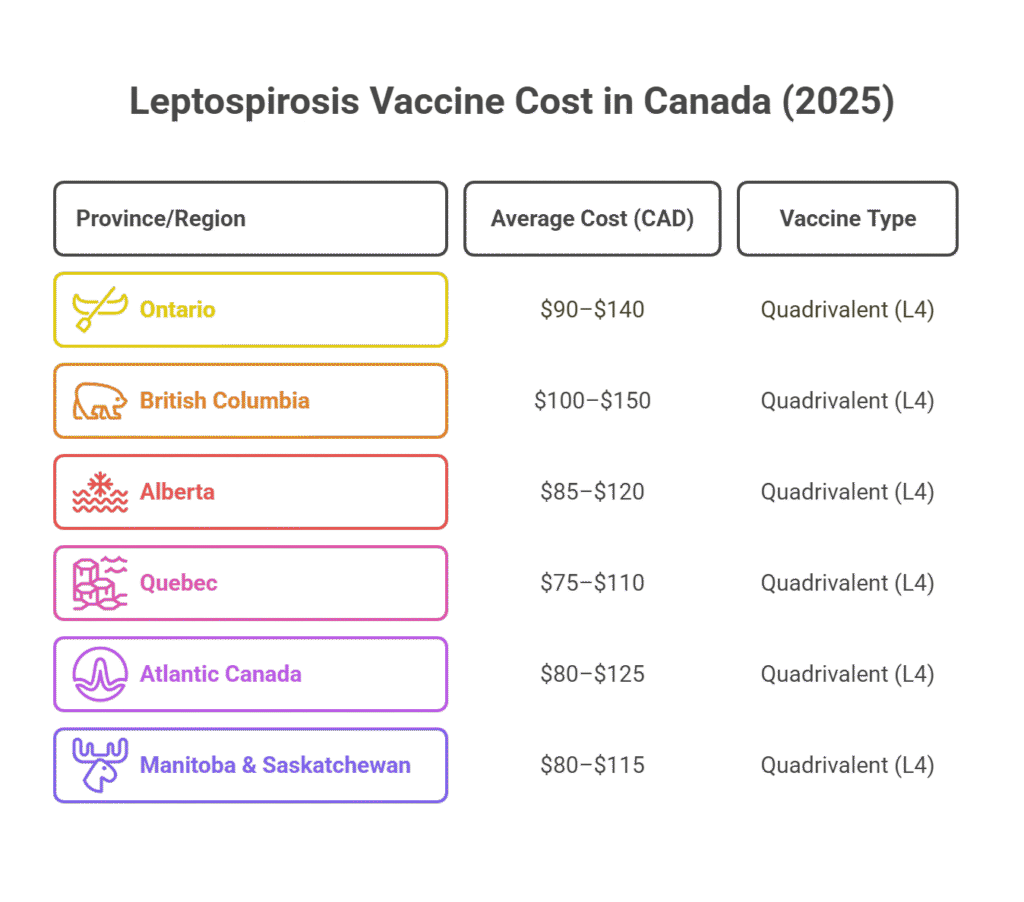
Considering that treating leptospirosis can easily exceed $2,000–$5,000 in emergency care, investing in an annual leptospirosis vaccine in dogs is not only smart, it could be life-saving and financially protective.
FAQs About Leptospirosis Vaccine in Dogs
Even with growing awareness, many pet owners still have lingering questions about leptospirosis and the vaccines designed to prevent it. Here are the most common ones I hear in the clinic, answered with 2025 insights.
Is the leptospirosis vaccine really necessary for city dogs?
Yes. Urban dogs are frequently exposed to wildlife carriers like rats, raccoons, and skunks, even in backyards or public parks. Combined with increased flooding and puddle contamination, this makes city dogs just as vulnerable. That’s why the leptospirosis vaccine in dogs is now a standard recommendation, regardless of location.
How often should my dog get vaccinated?
Dogs should receive a series of two doses initially (3–4 weeks apart), followed by annual boosters for continued protection. Skipping a year may leave your dog vulnerable to multiple serovars.
Are there side effects to the L4 vaccine?
Mild side effects like temporary soreness or tiredness can occur. In rare cases, especially in small breeds, there may be allergic reactions, but modern formulations have significantly reduced these risks. Talk to your vet if you have concerns; most dogs tolerate the vaccine very well.
Can dogs catch leptospirosis even after vaccination?
While no vaccine is 100% effective, the quadrivalent leptospirosis vaccine in dogs significantly reduces the risk of serious illness, shedding, and organ damage. It also reduces the severity of the disease if infection occurs.
Is leptospirosis contagious to humans?
Yes. Leptospirosis is a zoonotic disease. Dogs can shed bacteria in their urine and contaminate water or soil. Vaccinating your dog doesn’t just protect them, it also helps protect your family, especially children and immunocompromised individuals.
Conclusion
In 2025, the message is clear: the leptospirosis vaccine in dogs is no longer optional, it’s essential. With updated guidelines from ACVIM, strong real-world data, and confirmed zoonotic risks, the case for universal annual L4 vaccination is stronger than ever.
As a veterinarian, I’ve witnessed firsthand how this disease can devastate healthy pets within days. But I’ve also seen how consistent vaccination can fully prevent those heart-wrenching outcomes. The shift toward quadrivalent vaccines ensures broader protection, while growing public health awareness reinforces the One Health principle that protecting pets helps protect people, too.
So, whether your dog lives downtown, in the suburbs, or out in the countryside, the safest move you can make is simple: talk to your vet and ensure your dog is protected with the leptospirosis vaccine in dogs every year, without fail.

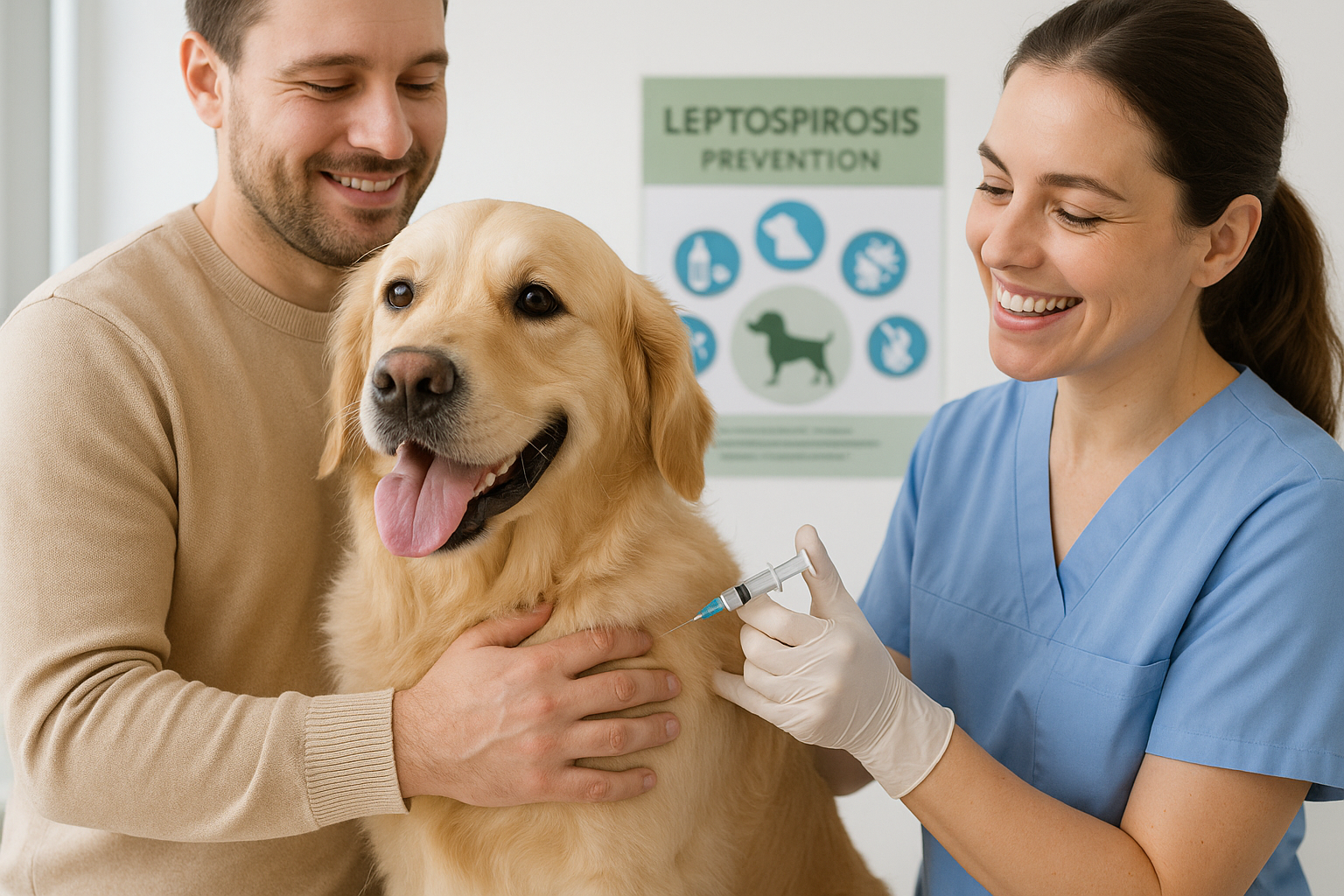



Pingback: Canine Parvovirus 2025: 7 Critical Reasons It Still Puts Dogs at Risk
Pingback: Grain-Free Dog Food and Heart Disease: Must-Know Facts for 2025